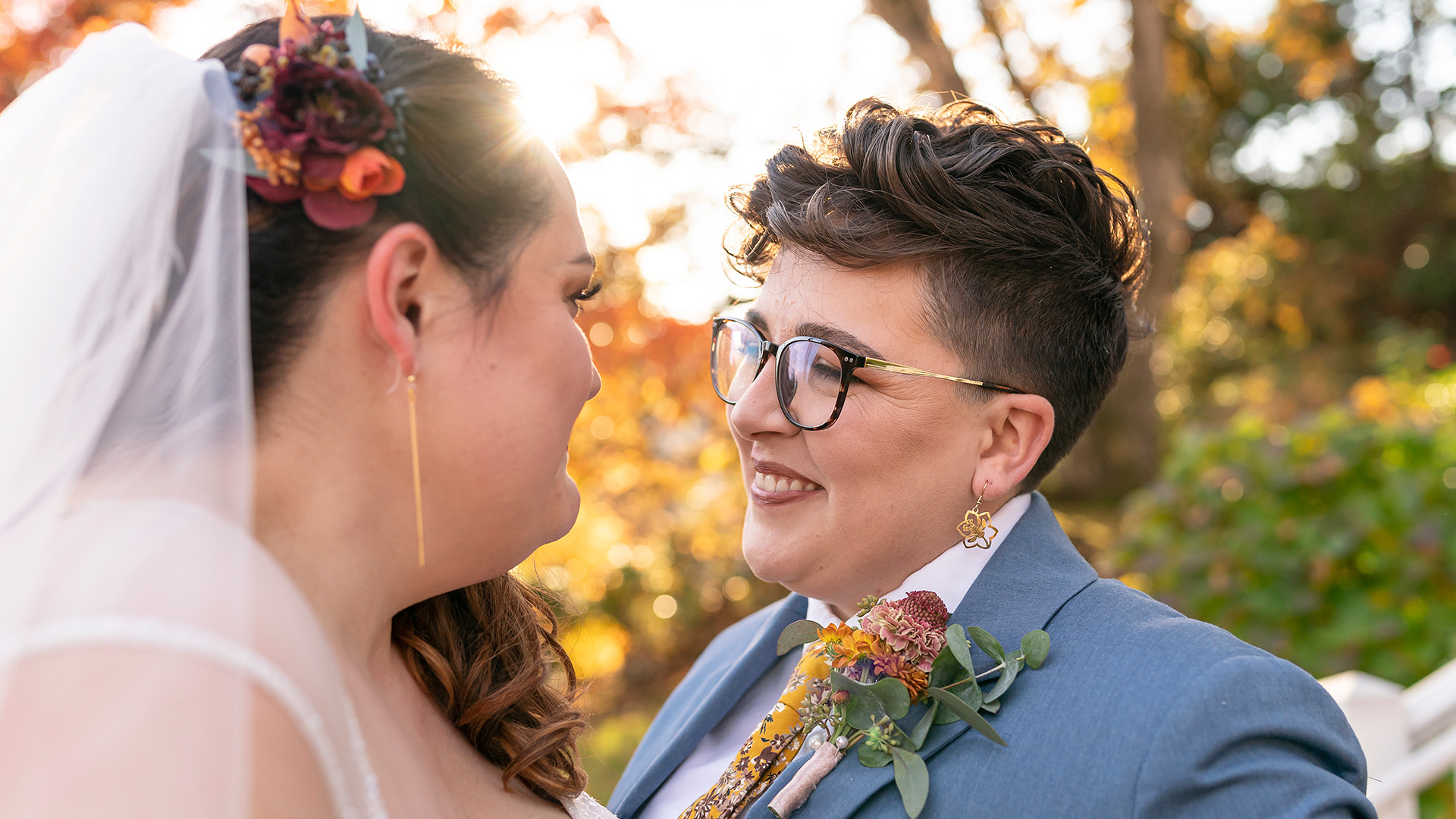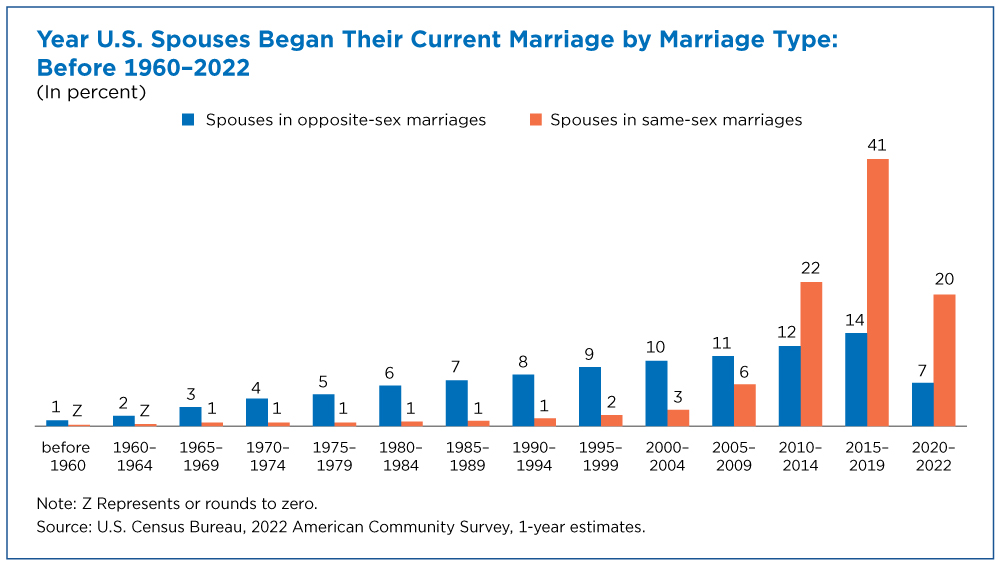Characteristics and Living Arrangements of Spouses in Same-Sex and Opposite-Sex Marriages
Same-sex marriages reached a peak between 2015 and 2019, right after the U.S. Supreme Court’s 2015 decision to legalize same-sex marriage in all states and most spouses in same-sex marriages tied the knot after 2003, when Massachusetts became the first state to legally recognize same-sex marriages.
About 41% of same-sex spouses married between 2015 and 2019 compared to 14% of those in opposite-sex marriages, according to a new U.S. Census Bureau report that analyzes 2022 data.
By distinguishing between male-male and female-female married couples, the report also examines whether characteristics of spouses in same-sex marriages are similar for men and women.
The report paints a national portrait of spouses in same-sex couples and their households, finding that on average they were younger; more likely to have a bachelor’s degree; and more likely to have married in the past year than those in opposite-sex marriages.
Characteristics of spouses in same-sex and opposite-sex couples differ depending on when they married. For example, spouses in same-sex marriages who married after 2015 tend to be older than those in opposite-sex marriages.
By distinguishing between male-male and female-female married couples, the report also examines whether characteristics of spouses in same-sex marriages are similar for men and women.
How spouses in opposite- and same-sex marriages compared in 2022:
- Among all spouses — regardless of when they married — those in same-sex marriages (46%) were more likely than those in opposite-sex marriages (34%) to be younger than 45. The opposite was true among spouses who married after 2015: 78% of those in opposite-sex marriages were younger than 45 vs. 65% of those in same-sex marriages.
- Out of all spouses, men in opposite-sex marriages (71%) were more likely to be in the labor force and employed than women in opposite-sex marriages (58%). Among same-sex married couples, the percentage of men (74%) and women (75%) who were employed did not significantly differ.
- Children under 18 were more common in opposite-sex married-couple households. About 38% of these households included a child of the householder, compared to 18% of same-sex married-couple households.
- Among households with children, same-sex married-couple households were more likely to have only adopted (21%) or only foster (2%) children of the householder present than opposite-sex married couple households (2% and 0.2% respectively).
- Living in an apartment was twice as common for same-sex married-couple households, consistent with the higher proportion of same-sex married-couple households in urban areas.
Related Statistics
Subscribe
Our email newsletter is sent out on the day we publish a story. Get an alert directly in your inbox to read, share and blog about our newest stories.
Contact our Public Information Office for media inquiries or interviews.
-
Families and Living ArrangementsSame-Sex Married Couples Less Likely to Be Same Age, Race, EthnicitySurvey data reveal patterns of social and economic similarity between same- and opposite-sex spouses.
-
Same-Sex CouplesInterracial Couples More Common Among Same-Sex CouplesMale same-sex couples had higher median household incomes than female same-sex couples even though the shares with both partners working did not differ.
-
NAICS Sector 31-33 ManufacturingSome Less Populous States Have High Manufacturing Revenue Per CapitaSeptember 29, 2025Today is the start of a week of celebrations at the Census Bureau marking the 14th annual Manufacturing Day on October 3.
-
Families and Living ArrangementsCouples’ Finances: Married but SeparateSeptember 24, 2025While most married couples had joint bank accounts, fewer shared all their financial accounts.
-
FertilityChildlessness on the Rise — Except for Women Ages 45 to 50September 23, 2025From 2014 to 2024, the share of older mothers rose as fewer teens and women in their 20s and 30s had children.
-
Business and EconomyHow AI and Other Technology Impacted Businesses and WorkersSeptember 17, 2025Businesses report that, in most cases, adoption of new technologies like robotics and Artificial Intelligence had no impact on worker numbers or skill level.





